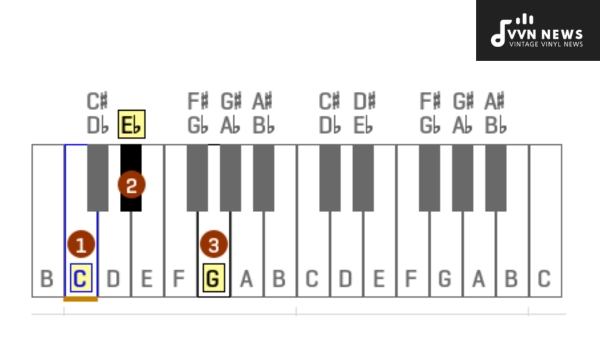As a music enthusiast, I believe there’s a magical allure deeply embedded in the language of music chords.
The simultaneous sounding of tones creates harmony, and adds richness and depth to the melody, ultimately enhancing the overall listening experience.
One prime example is the C Minor Triad – a fascinating chord that perfectly exemplifies how multiple dimensions seamlessly collaborate to deliver powerful sounds.
Soaring high on its enigmatic and profound resonance, this triad is capable of evoking intense emotions in an instant. It’s no surprise that musicians across genres utilize the remarkable properties of this captivating chord progression in their compositions.
Embrace your curiosity, and let’s enlighten ourselves about the C Minor Triad – its components, properties, usage, and beyond! Let’s pave our way towards becoming more fluent in this amazing musical vernacular.
What is a C Minor Triad?
A C Minor Triad is a chord consisting of three notes: C, E-flat (written as Eb), and G. It is constructed by starting with the root note, C, and adding two more notes—the minor third (Eb) and the perfect fifth (G).
The combination of these three notes creates the distinct sound of the C Minor Triad.
In musical notation, the C Minor Triad is represented by “Cm” or “Cmin.” The lowercase “m” or “min” indicates that it is a minor chord.
This chord has a somber and melancholic quality to it, evoking feelings of introspection and sadness.
The C Minor Triad is an essential chord in music theory and is widely used in various musical genres such as classical, jazz, pop, and rock.
It adds depth and emotion to compositions and can be used to convey a wide range of moods.
How is the C Minor Triad erected?
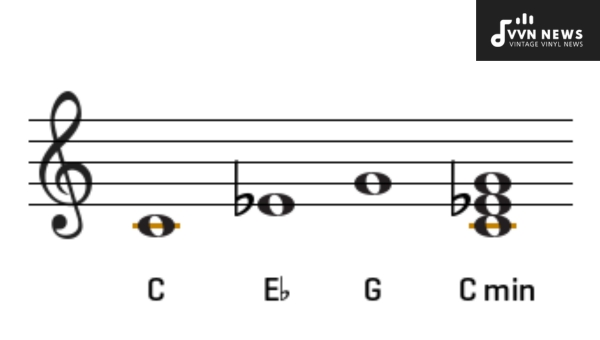
To construct a C Minor Triad, we start with the root note, C, and add two additional notes—the minor third and the perfect fifth. Here’s a step-by-step breakdown of how the C Minor Triad is created:
- Start with the root note: The root note of the triad is C.
- Determine the minor third: To find the minor third, count three half steps (also known as semitones) above the root note. In this case, we land on Eb.
- Find the perfect fifth: Moving forward from Eb, count four half steps to reach G—the perfect fifth of the triad.
- Play all three notes together: Now that we have our three notes—C, Eb, and G—we can play them simultaneously to create the C Minor Triad.
When playing a chord on an instrument like a piano or guitar, it’s important to use proper fingerings and positioning to achieve a clean and well-balanced sound.
Practice finger placement and spend time getting comfortable with transitioning between chords to ensure a smooth and seamless performance.
Understanding how chords are constructed is essential for any musician or aspiring songwriter.
Knowing how to build a C Minor Triad gives you greater freedom in creating your own music or interpreting existing pieces that incorporate this captivating chord structure.
Also Read: A Sharp Diminished Triad [Discover This Unique Chord]
How Does the C Minor Triad Differ from the C Major Triad?
The C Major Triad and the C Minor Triad are two different chords that produce distinct sounds. Let’s explore the differences between these two triads:
- Construction: The C Major Triad is constructed by combining the notes C, E, and G, while the C Minor Triad is formed by using the notes C, Eb, and G.
- Third Interval: The key difference between these two chords lies in the third interval. In a major triad, the third interval between the root note (C) and the third note (E) is a major third. However, in a minor triad, this interval is a minor third. This alteration changes the overall tonality of the chord.
- Sound Characteristics: The C Major Triad has a bright and uplifting sound due to its major third interval. It has a more stable and consonant feel to it, providing a sense of resolution when listening to it. On the other hand, the C Minor Triad has a more somber and melancholic character due to its minor third interval. It introduces tension and dissonance into compositions, creating an emotional depth.
- Expression of Emotion: The choice between using a major or minor triad depends on what emotion or mood you wish to convey in your musical piece. The major triad often represents happiness, joy, or triumph, while the minor triad expresses sadness, introspection, or mystery.
- Songwriting and Composition: Determining how major and minor triads differ allows composers to create contrasting sections within their compositions. By alternating between major and minor chords, musicians can evoke different emotions and add depth to their songs.
- Popular Chord Progressions: Each triad has its characteristic chord progressions that are commonly used in music composition. For example, the C Major Triad is often found in progressions such as C-F-G or C-Am-F-G. On the other hand, the C Minor Triad is frequently used in progressions such as Cm-Eb-Fm or Cm-Ab-Eb-Bb.
The difference between the C Major and C Minor Triads lies in their construction, sound characteristics, expression of emotion, and their role in chord progressions.
Whether you are composing music or simply appreciating it, these differences adds depth to your experience.
What is the Role of the C Minor Triad in Music Theory?
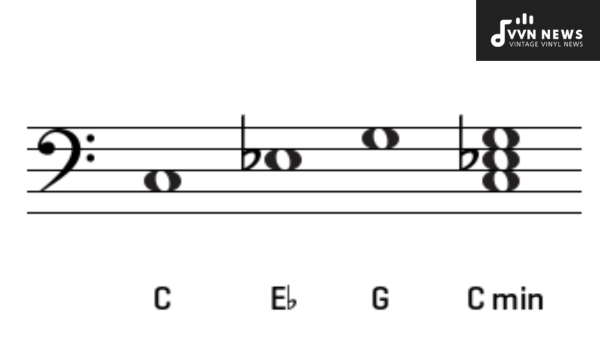
The C Minor Triad holds a significant place in music theory due to its unique tonality and its ability to evoke specific emotions. Let’s explore its role in more detail:
- Tonal Center: The C Minor Triad can serve as the tonal center or home base for a piece of music written in the key of C minor. It establishes a sense of stability and provides a foundation for melodies and harmonies.
- Minor Key: In music theory, minor keys are often associated with melancholic or darker emotions. The presence of the C Minor Triad enhances these feelings within a composition. It is commonly used to convey sadness, longing, or introspection.
- Harmonic Progressions: The C Minor Triad is frequently used in harmonic progressions to create tension and release within a piece of music. It can be combined with other chords to establish different moods and atmospheres.
- Modal Interchange: In modal interchange, chords from parallel major or minor keys are borrowed to add color and variety to a composition. The C Minor Triad can be borrowed from the parallel major key (C Major) and incorporated into songs written in major keys to provide moments of contrast and emotional depth.
- Chord Substitutions: Chord substitutions involve replacing one chord with another that shares similar characteristics or functions within a chord progression. The C Minor Triad can be substituted for other minor chords, enhancing the overall harmonic complexity and creating interesting musical textures.
- Melodic Development: The notes within the C Minor Triad—C, Eb, and G—are also essential building blocks for melodic development within compositions written in the key of C minor. They provide melodic choices that complement the underlying chord progression.
- Emotional Expressiveness: One of the core roles of any chord is to evoke specific emotions. The C Minor Triad, with its melancholic and introspective quality, is particularly effective at conveying feelings of sadness, vulnerability, and contemplation.
The role of the C Minor Triad in music theory opens up a world of possibilities for composers and musicians.
Its unique tonality lends itself to a variety of creative expressions and emotional journeys, making it an indispensable tool in our musical repertoire.
Also Read: B Diminished Triad [Master This Unique Guitar Chord]
How to Play a C Minor Triad on Different Instruments?
Playing a C Minor Triad on different instruments is a great way to explore the versatility and expressive qualities of this chord.
Below, I have outlined the steps for playing the C Minor Triad on some common instruments:
Piano/Keyboard:
- Find the middle C on your keyboard (usually it’s the 4th C from the left end).
- Place your thumb on the middle C.
- Skip two white keys to the left and play E-flat with your third finger.
- Skip another two white keys and play G with your fifth finger.
- Play all three notes simultaneously.
Guitar:
Playing a C Minor Triad on the guitar involves forming specific fretboard shapes using your fingers.
- Start by placing your index finger on the third fret of the A string (the 5th string).
- Use your middle finger to press down on the fourth fret of the D string (the 4th string).
- Place your ring finger on the fifth fret of the G string (the 3rd string).
- Strum only these three strings together to create a C Minor Triad.
Violin:
On a violin, each note of a triad is played separately, using individual bow strokes or plucking with fingers.
- Place your first finger on the A string (the second string from top) at pitch A-natural.
- Move back one semitone and place your second finger on that same A string at pitch B-flat.
- Lift both fingers off and play an open D-string for pitch D-natural.
This combination of pitches—A-flat, B-flat, and D—creates a C Minor Triad when played sequentially.
Practicing scales and arpeggios as well as familiarizing yourself with music theory will greatly assist you in mastering these chord shapes.
With dedication and practice, you will be able to confidently play the C Minor Triad on your instrument of choice.
Also Read: G Flat Diminished Triad [Discover Underrated Guitar Chords]
Inversions of C Minor Triad
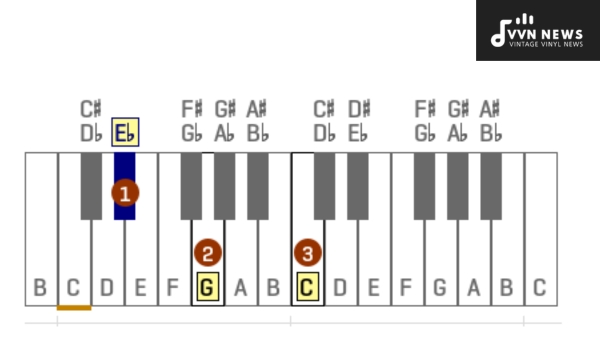
In music, an inversion refers to rearranging the order of the notes in a chord. When it comes to the C Minor Triad, there are three possible inversions: the root position, the first inversion, and the second inversion.
Each inversion provides a unique tonal color and offers composers and musicians different options for chord voicing.
- Root Position: The root position is the standard form of the C Minor Triad, where the root note (C) is at the bottom. The notes are stacked in thirds, with Eb (the minor third) above C and G (the perfect fifth) above Eb. The root position provides a stable foundation for the chord and is often used as a starting point for harmonic progressions.
- First Inversion: In the first inversion of the C Minor Triad, we take the third note (Eb) from the root position and move it up an octave so that it becomes the highest note in the chord. This results in G being at the bottom and C being in the middle. The first inversion has a slightly brighter and less grounded sound compared to the root position.
- Second Inversion: The second inversion involves taking the fifth note (G) from either the root position or first inversion and moving it up an octave to become the highest note. This places C as the lowest note in this arrangement. The second inversion has a distinctive and unstable sound compared to both previous inversions.
Inversions of chords allow musicians to create rich harmonies and add variety to their compositions or arrangements.
Experimenting with different inversions can lead to new melodic possibilities and give certain notes within a chord more prominence.
How to play C Minor Triad Inversions on Guitar and Piano?
Playing the C Minor Triad inversions on the guitar and piano can open up a world of melodic possibilities.
Inversions are alternate ways of playing a chord by changing the order of the notes. Let’s explore how to play C Minor Triad inversions on both instruments.
Guitar:
To play C Minor Triad inversions on the guitar, you’ll need to know the C Minor chord shape as a starting point. Here’s a step-by-step guide:
- Start with the standard C Minor chord shape: Place your first finger on the third fret of the A string, your second finger on the fifth fret of D string, and your third finger on the fifth fret of the G string. Do not play string 1 (E) and string 6 (E).
- First Inversion: Raise your first finger so that it now presses down on the third fret of both A and D strings. Keep your second and third fingers in their original positions. Now, you have E-flat (Eb) as the lowest note.
- Second Inversion: Move your second finger from the fifth fret of D string to the fourth fret of G string. Keep your first and third fingers in their original positions. This change moves G to become the lowest note.
- Third Inversion: Move your third finger from the fifth fret of G string to the eighth fret of B-string, while keeping other fingers in their original positions. This rearrangement places C as the highest note.
Remember to practice transitioning smoothly between these inversions while maintaining a consistent strumming or picking pattern.
Piano:
Playing C Minor Triad inversions on piano allows for different voicings and textures. Here are step-by-step instructions for each inversion:
- Start with C Minor position: Place your right-hand thumb (finger 1) on C, your middle finger (finger 3) on E-flat (Eb), and your pinky (finger 5) on G.
- First Inversion: Raise your thumb (finger 1) to D, keeping the other fingers in their original positions. This inversion places E-flat as the highest note.
- Second Inversion: Keep your pinky (finger 5) on G, but move your thumb (finger 1) to E-flat and your middle finger (finger 3) to C. Now G is the highest note in this inversion.
- Third Inversion: Move your pinky (finger 5) from G to C, while keeping the other fingers in their original positions. This rearrangement places E-flat as the highest note.
Experiment with different rhythmic patterns and dynamics as you practice these inversions on the piano to bring out different tonal colors and expressivity.
By familiarizing yourself with these inversions, you’ll expand your chord vocabulary and be able to create unique musical arrangements and progressions using the evocative sound of the C Minor Triad inversions.
Also Read: G Sharp Diminished Triad [Explore Unique Guitar Chords]
What are Common Chord Progressions Involving the C Minor Triad?
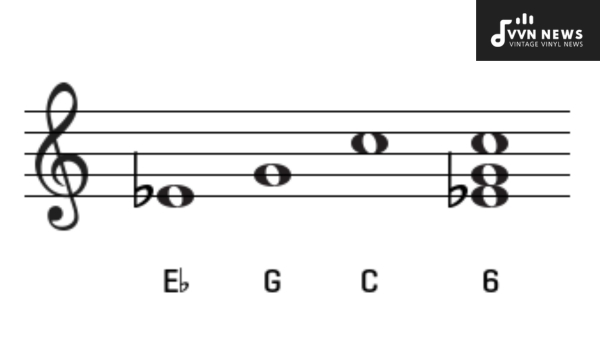
Chord progressions involving the C Minor Triad are a fundamental building block in music composition.
They provide a sense of progression and create a strong foundation for melodies and harmonies. Here are some common chord progressions that make use of the C Minor Triad:
- I-IV-V: In this progression, the chords used are based on the 1st (C), 4th (F), and 5th (G) degrees of the C Major scale. The C Minor Triad can be substituted for the C Major chord, adding a hint of melancholy to the progression.
- i-iv-v: This progression is commonly found in minor keys. By using the natural minor scale, it includes chords based on the 1st (Cm), 4th (Fm), and 5th (Gdiminished) degrees. The use of the diminished chord adds tension and creates an interesting harmonic element.
- ii-V-I: A popular progression in jazz music, this sequence involves chords based on the 2nd (Dm7b5), 5th (G7), and 1st (Cm) degrees of the C Major scale. The inclusion of diminished and dominant seventh chords gives this progression a sophisticated and jazzy sound.
- vi-IV-I-V: This is often referred to as “the pop-punk progression” or “the doo-wop progression.” It involves chords based on the 6th (A minor), 4th (F major), 1st (C major or C minor), and 5th (G major) degrees of the C Major scale. It has been used in countless hit songs across different genres due to its catchy and uplifting nature.
These chord progressions offer just a glimpse into the vast possibilities of using the C Minor Triad. Experimenting with these progressions and exploring variations can help you create unique and captivating musical compositions.
FAQs about C Minor Triad
What makes the C Minor Triad different from other chords?
The C Minor Triad differs from other chords due to its specific combination of three notes: C, Eb, and G. This combination gives it a distinct and melancholic sound that sets it apart from other chords.
Can I use the C Minor Triad in any genre of music?
Yes, the C Minor Triad is versatile and can be used in various musical genres, including classical, jazz, pop, and rock. Its emotional quality makes it a popular choice for composers looking to create a somber or introspective atmosphere.
Are there alternative ways to play the C Minor Triad on different instruments?
Yes, the C Minor Triad can be played on different instruments like guitar and piano. Each instrument has its fingering or voicing for this chord, so it’s essential to understand the specific finger positions for each instrument.
How can I practice and master playing the C Minor Triad?
To practice and master playing the C Minor Triad, start by familiarizing yourself with its structure—root note (C), minor third (Eb), and perfect fifth (G). Practice chord voicings and explore different musical pieces that incorporate this chord.
Can I use inversions of the C Minor Triad in my compositions?
Absolutely! Inversions of the C Minor Triad are an excellent way to add variety and a unique flavor to your compositions. Experiment with different inversions to find interesting chord progressions that suit your musical style.
Conclusion
The C Minor Triad is a powerful and emotive chord that has been used by composers throughout history to convey a range of emotions.
Its unique blend of the root note (C), minor third (Eb), and perfect fifth (G) creates a melancholic and introspective sound that resonates with listeners.
Whether you are a musician, composer, or simply an avid music lover, exploring the C Minor Triad opens up a world of possibilities for creating and experiencing music that captivates the heart and soul.
